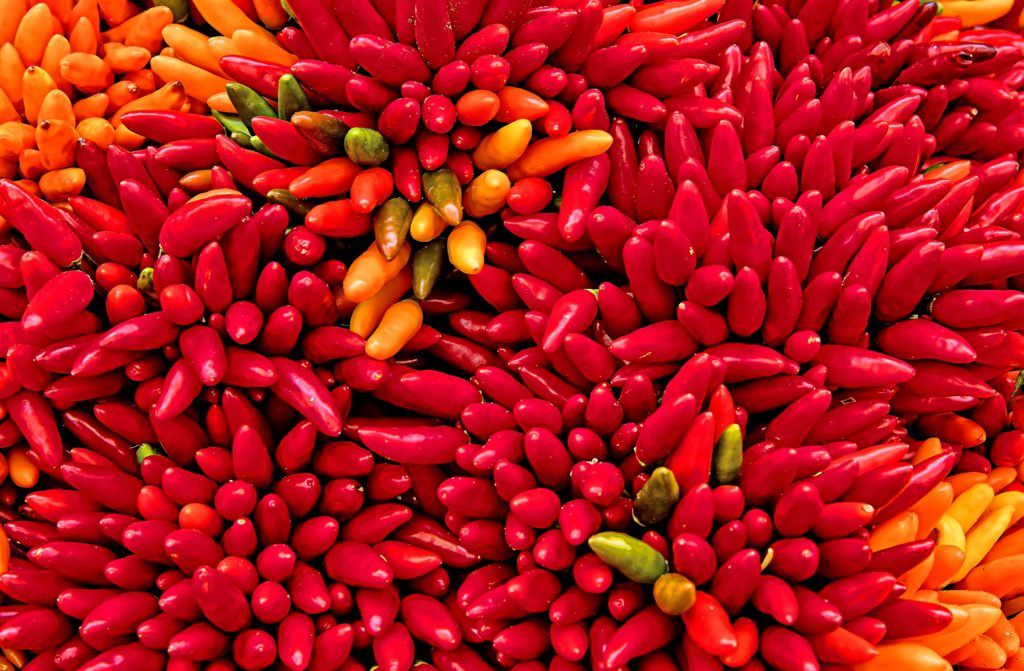
Hot peppers, or chilis, are a ubiquitous part of cuisines worldwide, but actually are native to the Americas. In fact, the word ‘chili’ comes from the Aztec language, Nahuatl, but they have been cultivated in Mexico since as early as 3500 BC. They can be found in many different varieties, shapes, sizes, and colors, and can be tolerantly spicy, like with poblanos, or insanely hot, like with Carolina Reaper peppers.
The capsaicin that makes chili peppers spicy is mostly found in the membranes or white ribs on the inside of the pepper itself, so to tone down the heat, make sure to remove that portion – but be careful! Wear gloves when handling hot peppers at home to avoid burning fingers or eyes.
Hot peppers are traditionally ranked by the Scoville scale, developed in 1912, to determine heat level. Because the Scoville scale used palate to determine it’s ratings, scores generally have a range (habaneros can range anywhere from 100,000 to 300,000 on the scale.) This measurement determined how long tasters could discern the heat level in a capsaicin and sugar water solution, as it was gradually diluted by water. Check for these scores when shopping for seeds or hot sauce to have an idea of what to expect from your spicy peppers!
In the Garden
Hot peppers are tropical or subtropical plants, so they really enjoy heat and humidity. Pepper seeds need heat to germinate, so start them with a heat mat. Chili peppers will turn colors as they ripen, generally from green to yellow, orange or red.
In the Medicine Cabinet
Despite the burning sensation caused by capsaicin, there are studies that suggest this compound can help with weight loss and inflammation. Fresh peppers also have plentiful antioxidants, which range according to pepper color and type, such as capsanthin, which is found in red peppers.
In the Kitchen
In general, fresh, local hot peppers will keep for 1-2 weeks in the refrigerator. To preserve them, you can also dehydrate them for flavor all year long! Chilis are easily dehydrated in a dehydrator, but you can also try the more traditional method of drying them strung together.
I like to use peppers with anything from spicy pasta dishes to adding heat and depth of flavors to stews and soups. Fresh chili peppers are great additions to Summer corn or fruit salads, and of course, lacto-fermented hot sauce is a yummy way to bring in local flavor to dishes throughout the year.
One easy way to include chili flavor is to make it into a simple, refreshing drink! Cool off and (spice up!) with a Jalapeño Watermelon Slushie.
Claire Butler is the Content Strategy Specialist for Taste the Local Difference. Contact her at [email protected].
Sources:
- Edible: An Illustrated Guide to the World’s Food Plants by National Geographic
- Flavor by Yotam Ottolenghi
- The Kitchen Gardenby Alan Buckingham
